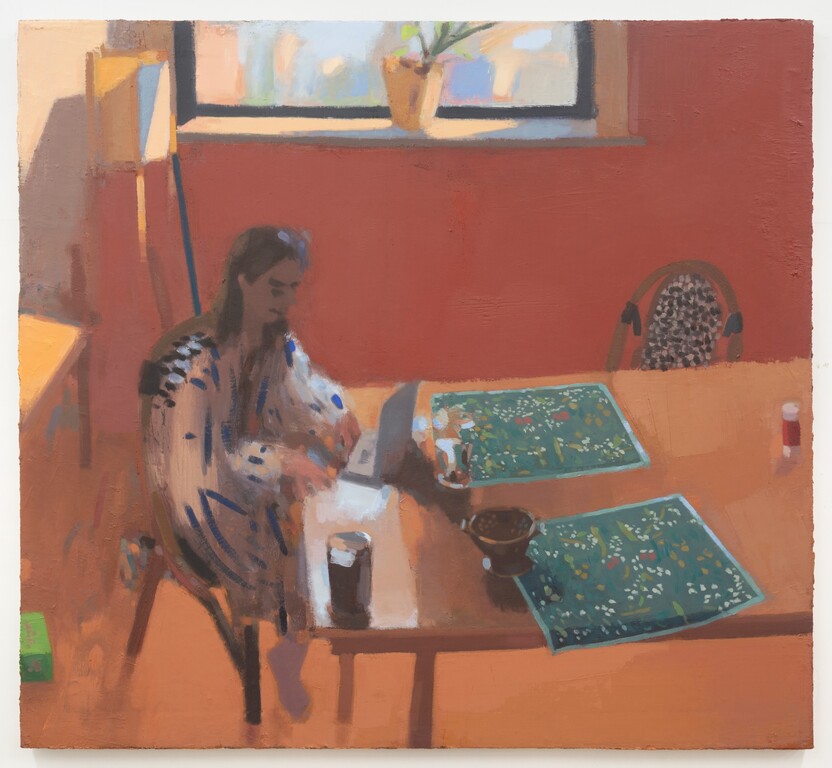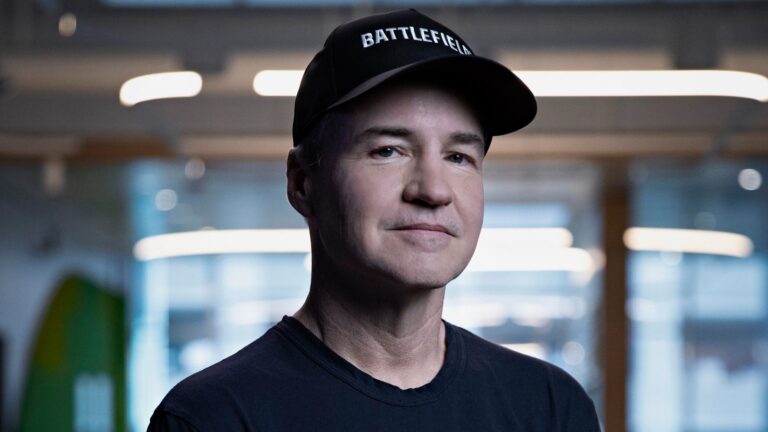
Andrew Shea: Grocery Slips
JJ Murphy Gallery
Until November 15
Andrew Shea’s paintings, currently on exhibition at J. J. Murphy Gallery, are quiet in their ambition and deceptively modest in scope. The show’s title, “Grocery Slips,” is unostentatious, evoking a fragment of everyday life that many of us barely notice.
The subjects of the canvases are similarly commonplace: the morning’s first cup of coffee, an afternoon siesta, one’s belongings reflected in a mirror, and a somewhat ambiguous scene in the painting titled “9 A. M.” Is it a figure at her morning toilette? A woman wrapped in a dense robe? The scene is energized by a flurry of chromatic grays set within an expanse of milky green. Selective dabs of ochre, blue, red, alongside gray, black, and ivory, gather toward the left side of the composition, suggesting distant objects.
How important is it for the viewer to pin down the specifics of an image? Not very. It is enough that Mr. Shea has captured and given permanence to a moment otherwise lost in the passage of time.
“Grocery Slips” marks the first New York City exhibition of a painter better known as an art critic, having contributed to the Wall Street Journal, The New Criterion, and the Brooklyn Rail. Mr. Shea is a rarity in a field often characterized by dense and obscure jargon. His prose is supple, his eye nuanced, and his temperament appreciative, though he doesn’t shy away from pointed criticism when warranted. Of the German painter Gerhard Richter, Mr. Shea once wrote that he “has the whimsicality of an accountant.”
But how does the accomplished writer fare as a painter? The tool most evident in his work is the palette knife—an instrument far from delicate. Imagine spreading cream cheese on a bagel: detail and finesse give way to bold shapes and a tactile, generous physicality. As a result, Mr. Shea’s paintings possess a lush and somewhat counterintuitive monumentality, with surfaces that are sumptuous to behold.
Mr. Shea cites poets William Carlos Williams and James Schuyler as inspirations—two temperaments who strove to underscore (as Schuyler put it) “a nothing day full of wild beauty.” This elevation of the ordinary finds a parallel in the intimism of painters Pierre Bonnard and Édouard Vuillard. Bonnard discovered tenderness beneath the prosaic through his layering of oils, while Vuillard’s terse brushwork carried an undercurrent of psychological depth. Mr. Shea is in direct dialogue with these precedents and acquits himself admirably.
Among the works on display, the largish “Morning Coffee” (2025) stands out as a potential show-stopper, with its bravura sweep of warm, indefinable colors that captivate the eye. Yet, Mr. Shea also excels in small formats—condensed canvases that invite focused attention and suggestion. The cool grays dominating “Wickenden Breakfast” and the tawny hues of “Drawing Session (A+B)” (2024) seem to extend beyond their borders, imbuing these miniaturist scenes with both gravity and grace.
For those who treasure art’s ability to elaborate on the subtleties of everyday experience, Mr. Shea’s captivating collection of “residual gestures” is not to be missed.





